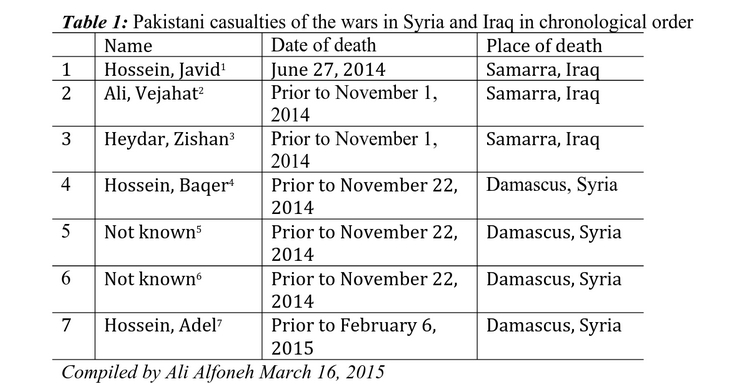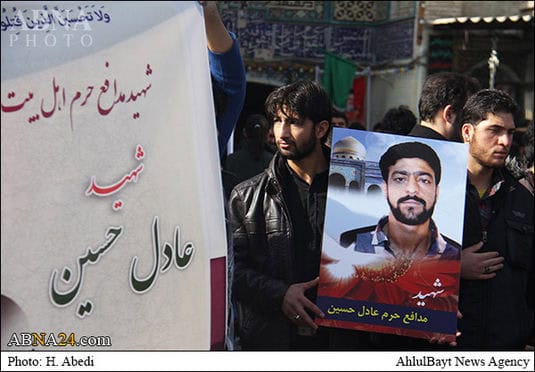A comparative analysis of funeral services held in Iran for seven Shiite Pakistani nationals killed in combat in Syria and Iraq (Table 1, below), and those of Shiite Afghan casualties in Syria, provides insight into Tehran’s use of non-Iranian Shiites in its struggle against regional Sunni adversaries such as Saudi Arabia, Pakistan and their salafist jihadist affiliates.
As with the Afghan casualties, the funeral processions of all Shiite Pakistani “martyrs” killed in Syria and Iraq took place in Iran, in the presence of their family and relatives, which indicates that they were residing there prior to their deployment, and did not volunteer for combat from Pakistan. In the case of Javid Hossein, Iranian media outlets admit that he was a resident of Qom.
Just as with the Afghan casualties, the Islamic Republic’s media insist the Shiite Pakistani “martyrs” had joined the struggle independent of government agencies in Iran, but representatives of the Islamic Revolutionary Guards Corps (IRGC), the Basij militia and government clerics were present at the funeral services. This clearly indicates an active engagement of Iranian government agencies in the recruitment and deployment of Shiite Pakistanis to Syria and Iraq.
Apart from the aforementioned similarities, there are a number of differences between Shiite Afghan and Shiite Pakistani casualties from Syria and Iraq.
The most obvious difference is the number of the casualties from each group. Since the release of the data on Shiite Afghan casualties in Syria on March 12, four more Shiite Afghans killed in combat have been identified, bringing the number to sixty-six casualties. By comparison, only seven Shiite Pakistani casualties have been detected in the Iranian press. This may reflect the significantly smaller population of Pakistani immigrants residing in Iran, which provides Iranian government agencies with a smaller pool of recruits.
In contrast to Shiite Afghan casualties who all serve in the purely Afghan Fatemiyoun Brigade, the Pakistani recruits do not seem to have a brigade of their own. The Pakistanis also suffered casualties in both Iraq and Syria – whereas the Shiite Afghans were all killed in Syria – which indicates that they either served in the Qods Force of the Islamic Revolutionary Guards Corps (IRGC QF), or alongside Shiite militias allied under IRGC QF’s command. This too may be a result of the smaller pool of Shiite Pakistani recruits in Iran.
The small number of Shiite Pakistani recruits likely reflects the Islamic Republic’s limited abilities to mobilize the Shiite Pakistanis, rather than Tehran’s restrain in the struggle against nuclear-armed Pakistan. This, however, may change; as salafist jihadist terrorism against the Shiites in Pakistan chases this minority toward the regime in Tehran, Iran’s propaganda and indoctrination machinery may find more recruits among this disaffected population.
Ali Alfoneh is a senior fellow at Foundation for Defense of Democracies (FDD)









